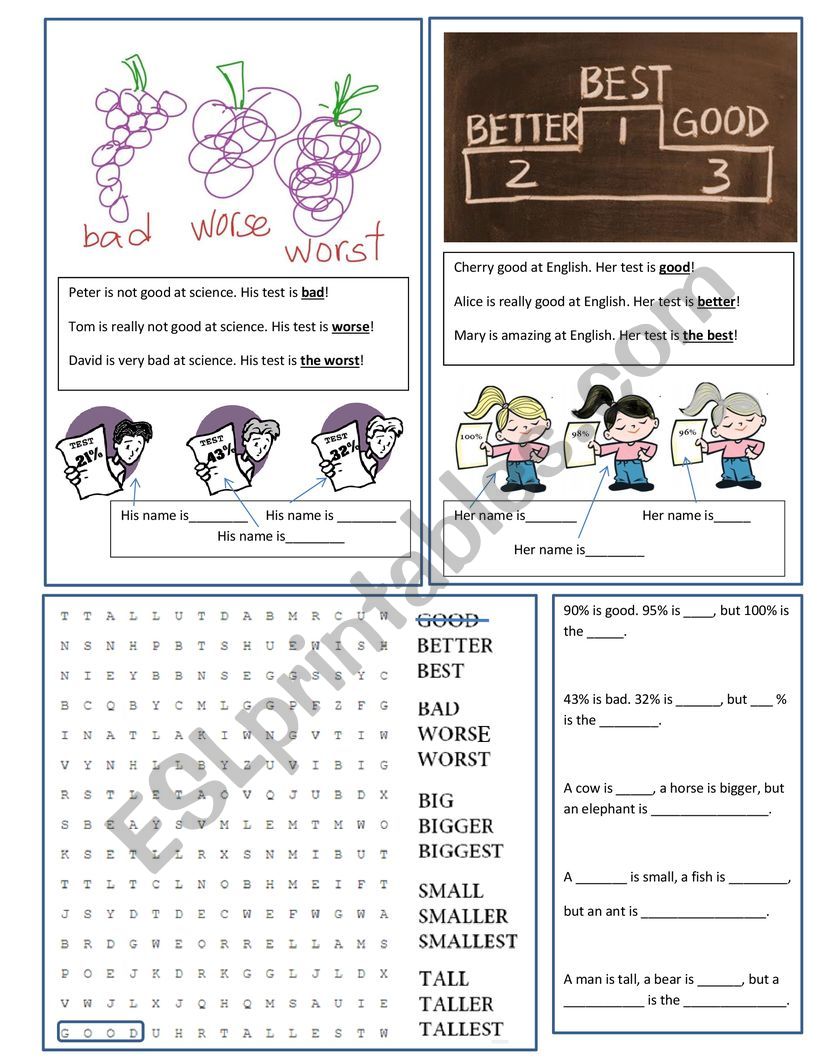
Mastering Degrees of Negativity: The Indispensable "Bad, Worse, Worst" Worksheet
In the vast and intricate landscape of the English language, adjectives play a pivotal role in painting vivid pictures and conveying precise meanings. They allow us to describe the qualities of nouns and pronouns, adding depth and detail to our communication. However, simply knowing the basic form of an adjective is often not enough. To truly express nuanced comparisons and extremes, one must master the degrees of adjectives: positive, comparative, and superlative. While many adjectives follow predictable patterns for these degrees, a select few are irregular, demanding special attention and dedicated practice. Among these, the irregular adjective "bad" and its comparative and superlative forms, "worse" and "worst," stand out as particularly challenging yet crucial for English learners. This article will delve into the intricacies of "bad, worse, worst," exploring their correct usage, common pitfalls, and the indispensable role of a well-designed bad worse worst worksheet in achieving fluency and accuracy.
The Foundation: Understanding Adjective Degrees

Before we immerse ourselves in the irregularities of "bad," let’s briefly revisit the concept of adjective degrees.
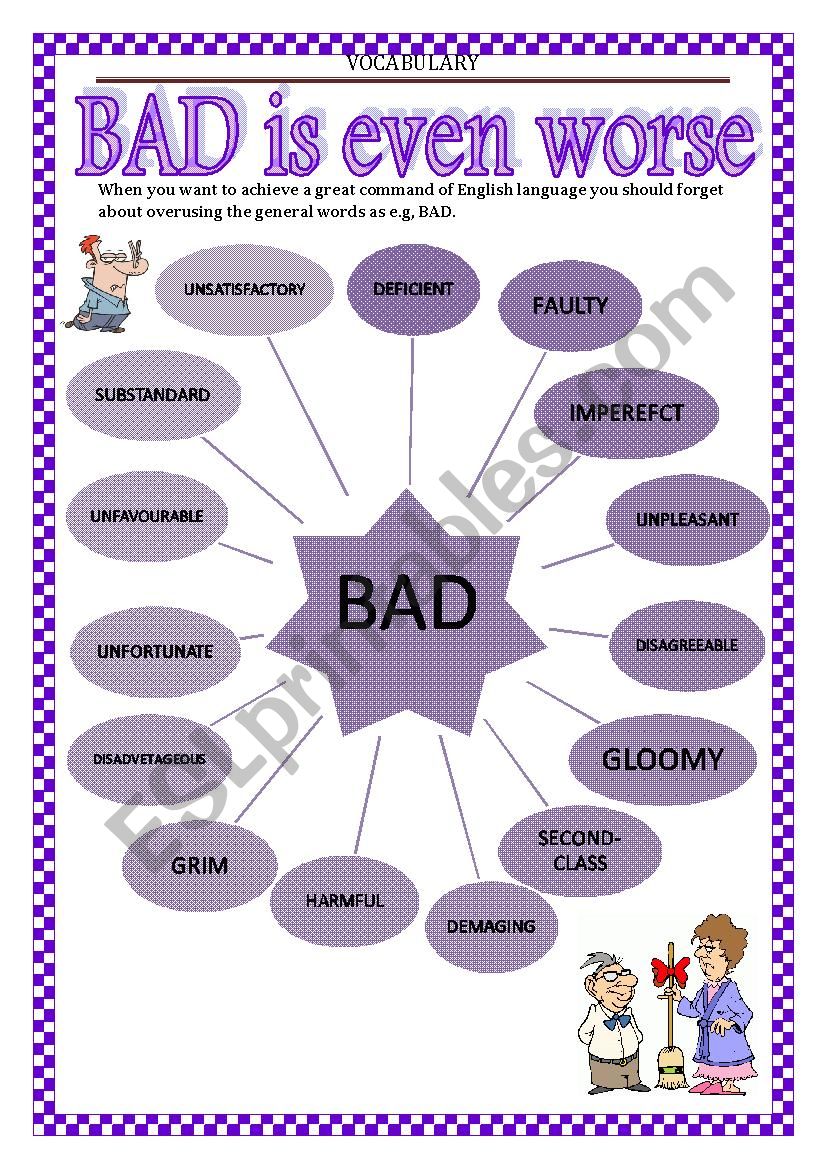
-

Positive Degree: This is the basic form of an adjective, used to describe a single noun or pronoun without comparison.
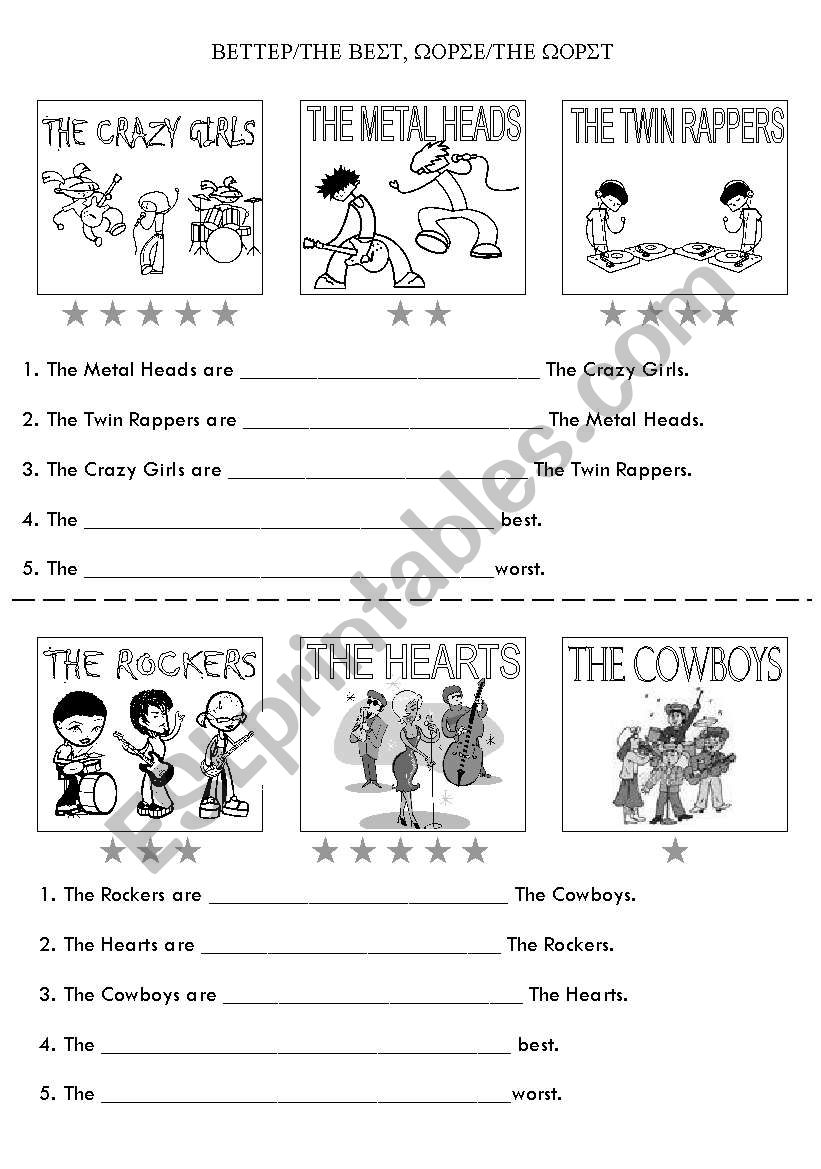
- Example: The weather is bad today.
-

Comparative Degree: This form is used when comparing two nouns or pronouns, indicating that one possesses a certain quality to a greater or lesser extent than the other.
- Example: The weather today is worse than yesterday.
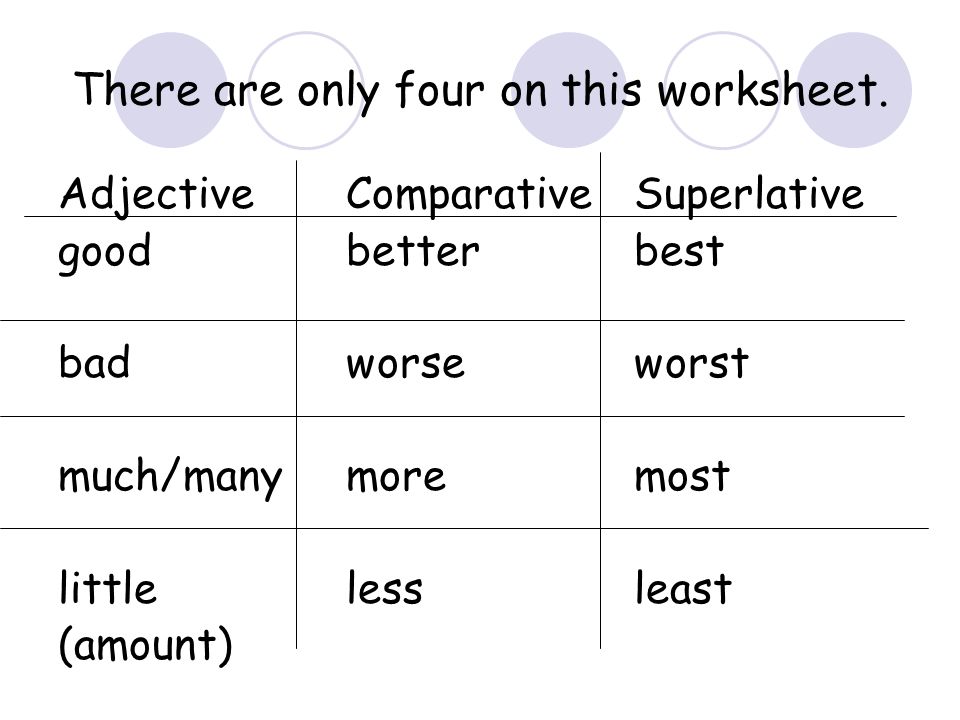

-
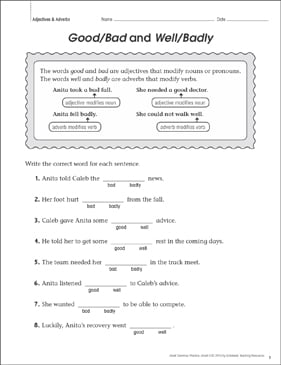
Superlative Degree: This form is used when comparing three or more nouns or pronouns, indicating that one possesses the highest or lowest degree of a certain quality among the group. It is almost always preceded by "the."
- Example: This is the worst weather we’ve had all year.
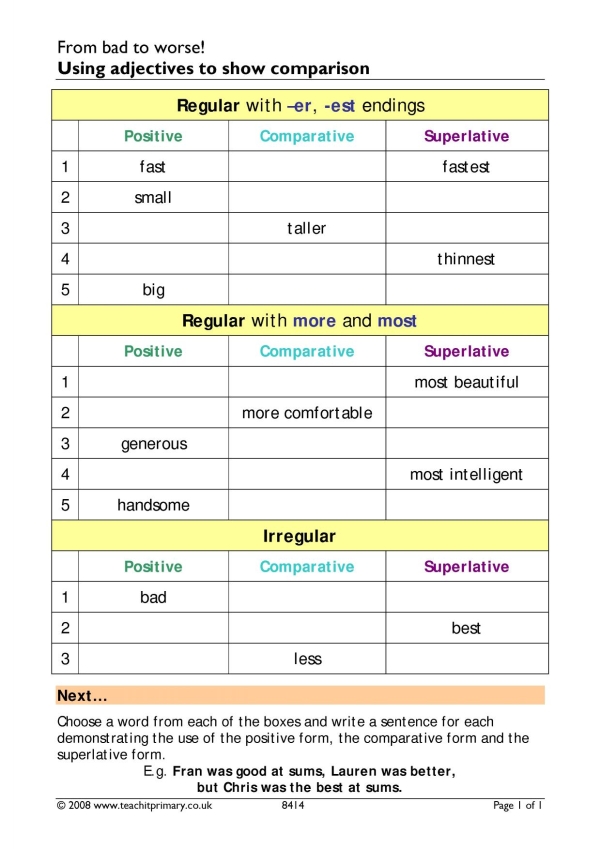
Most adjectives form their comparative and superlative degrees regularly:
- One-syllable adjectives: Add "-er" for comparative and "-est" for superlative (e.g., tall, taller, tallest; fast, faster, fastest).
- Two-syllable adjectives ending in -y: Change "y" to "i" and add "-er" or "-est" (e.g., happy, happier, happiest; easy, easier, easiest).
- Adjectives with two or more syllables: Use "more" for comparative and "most" for superlative (e.g., beautiful, more beautiful, most beautiful; expensive, more expensive, most expensive).
However, English, being a language rich in historical development, has its share of exceptions, and "bad" is one of the most prominent.
The Irregularity of "Bad, Worse, Worst"
The forms "worse" and "worst" do not derive directly from "bad" by adding suffixes, but rather evolved from Old English words that were distinct but related in meaning. This historical quirk is why they are considered irregular and must be memorized rather than deduced by rule.
1. Bad (Positive Degree)
"Bad" is used to describe something of poor quality, unfavorable, unpleasant, or morally wrong. It’s a straightforward descriptor for a single entity or situation.
- Examples:
- The movie was bad. (Poor quality)
- I had a bad day at work. (Unfavorable)
- Eating too much sugar is bad for your health. (Unhealthy/unfavorable consequence)
- That was a bad decision. (Unwise/unfavorable outcome)
A common mistake is confusing "bad" (an adjective) with "badly" (an adverb). "Bad" describes a noun (e.g., "I feel bad" about my mistake, where "bad" describes "I"), while "badly" describes a verb (e.g., "He sings badly," where "badly" describes how he sings). While "I feel badly" is sometimes heard, it technically means your sense of touch is impaired, not that you feel sad or remorseful. For expressing emotions or general well-being, "I feel bad" is correct.
2. Worse (Comparative Degree)
"Worse" is used when comparing two things, indicating that one is of a lower quality, more unfavorable, or more unpleasant than the other. It is almost always followed by the conjunction "than" to introduce the second item of comparison.
- Examples:
- The second movie was worse than the first one. (Comparing two movies)
- His performance today was worse than his performance yesterday. (Comparing two performances)
- The traffic is worse on Mondays than on Tuesdays. (Comparing traffic on two days)
- My headache got worse after I took the medicine. (Comparing my headache now to before)
- Things went from bad to worse. (A common idiom indicating a deteriorating situation)
Understanding the "than" is critical. Omitting it or using "then" instead is a common error that can lead to confusion.
3. Worst (Superlative Degree)
"Worst" is used when comparing three or more things, indicating the absolute lowest quality, most unfavorable, or most unpleasant among the group. It is almost always preceded by the definite article "the."
- Examples:
- That was the worst movie I have ever seen. (Comparing it to all movies seen)
- He gave the worst performance of his career. (Comparing it to all his career performances)
- This is the worst traffic jam in the city’s history. (Comparing it to all traffic jams)
- Out of all the candidates, she was the worst choice. (Comparing her to all other candidates)
- I’m having the worst day. (Comparing it to all other days in my life)
The use of "the" before "worst" is as crucial as "than" after "worse." It signals that you are identifying the single most extreme example within a given set.
Practical Application and Usage Scenarios
The ability to correctly use "bad, worse, worst" is not merely an academic exercise; it’s fundamental to effective everyday communication. From casual conversations to formal reports, these words are used to describe:
- Health and Well-being: "I feel worse today than yesterday." "This is the worst cold I’ve ever had."
- Performance and Quality: "His presentation was bad." "Her second attempt was worse." "That was the worst meal I’ve ever eaten."
- Situations and Conditions: "The economic situation is bad." "The pollution has gotten worse." "This is the worst drought in decades."
- Morality and Behavior: "That was a bad lie." "His actions were worse than mine." "Cheating is the worst thing you can do."
Mastering these forms allows for precise expression, preventing ambiguity and enhancing clarity.
The Indispensable Role of the Bad Worse Worst Worksheet
Given the irregular nature and frequent usage of "bad, worse, worst," rote memorization alone is often insufficient. Learners need contextualized practice, varied exercises, and opportunities for immediate application. This is precisely where a well-designed bad worse worst worksheet becomes an invaluable tool.
A comprehensive bad worse worst worksheet should ideally include:
- Gap-fill exercises: Sentences with blanks where learners must choose the correct form (bad, worse, or worst) based on the context.
- Example: The food was , but the service was even . (bad, worse)
- Sentence transformation: Learners are given a sentence with "bad" and asked to rewrite it using "worse" or "worst" to create a comparison or superlative statement.
- Example: Original: The movie was bad. Rewrite: That movie was the ____ one I’ve seen. (worst)
- Error correction: Sentences containing common mistakes (e.g., "more bad," "the worse," "worse without than") that learners need to identify and correct.
- Example: Incorrect: This is the worse day of my life. Correct: This is the worst day of my life.
- Multiple choice questions: Providing several options for a blank, including distractors like "more bad" or "badly."
- Contextualized scenarios: Short paragraphs or dialogues where learners must naturally integrate "bad, worse, worst" to describe unfolding events. This helps develop a feel for natural usage.
- Creative writing prompts: Encouraging learners to write their own sentences or short paragraphs using all three forms. This promotes active recall and application.
The benefits of a structured bad worse worst worksheet are manifold. It provides targeted practice, reinforces the correct usage patterns, helps identify and rectify common errors, and builds confidence in applying these irregular forms in both spoken and written English. For educators, it offers a clear framework for teaching and assessment. For learners, it provides a self-study resource that can be revisited until mastery is achieved.
Common Mistakes and How to Avoid Them
Despite their frequent use, "bad, worse, worst" are often misused. Here are some common pitfalls and how to steer clear of them:
- Using "more bad" or "most bad": This is the most common error, applying regular adjective rules to an irregular one. Always use "worse" and "worst."
- Incorrect: My day was more bad than yours.
- Correct: My day was worse than yours.
- Confusing "worse" and "worst": Using the comparative form when a superlative is needed, or vice-versa. Remember: "worse" for two things, "worst" for three or more.
- Incorrect: This is the worse movie I’ve ever seen. (Should be "worst" as it compares to all movies)
- Incorrect: My headache is worst today than yesterday. (Should be "worse" as it compares two states)
- Omitting "than" after "worse" or "the" before "worst": These articles/conjunctions are crucial for grammatical correctness and clarity.
- Incorrect: My grades are worse last semester. (Missing "than")
- Correct: My grades are worse than last semester.
- Incorrect: That was worst decision. (Missing "the")
- Correct: That was the worst decision.
- Using "badly" instead of "bad" when describing feelings or states of being: "Badly" is an adverb.
- Incorrect: I feel badly about the news.
- Correct: I feel bad about the news.
Tips for Learners and Educators
-
For Learners:
- Memorize and internalize: There’s no shortcut for irregular forms. Repeat them, write them down, and use them actively.
- Practice, practice, practice: Actively seek out opportunities to use "bad, worse, worst" in your conversations and writing. Work through a dedicated bad worse worst worksheet multiple times.
- Read and listen actively: Pay attention to how native speakers use these forms in books, movies, podcasts, and daily conversations.
- Create your own examples: Make up sentences that are relevant to your own life. This makes learning more personal and memorable.
- Get feedback: Ask a teacher or a native speaker to review your usage.
-
For Educators:
- Introduce systematically: Start with the positive degree, then comparative, then superlative. Emphasize the "than" and "the."
- Use visual aids: Charts and diagrams can help illustrate the degrees of comparison.
- Provide context: Don’t just give isolated sentences. Use short stories, dialogues, or real-life scenarios.
- Incorporate interactive activities: Role-playing, debates, or comparing everyday objects can make learning fun and engaging.
- Address common errors proactively: Highlight typical mistakes and explain why they occur.
Conclusion
The journey to English fluency is paved with mastering both regular patterns and intriguing irregularities. "Bad, worse, worst" represents one such crucial irregularity, whose correct application significantly enhances a speaker’s precision and naturalness. From describing a slight disappointment to conveying the utter depths of despair, these three words are indispensable tools in the English lexicon. Through dedicated practice, careful attention to context, and the consistent use of targeted learning materials like a comprehensive bad worse worst worksheet, learners can confidently navigate the nuances of negativity, transforming a potential stumbling block into a stepping stone towards advanced English proficiency. Mastering these forms isn’t just about grammar; it’s about unlocking a richer, more expressive way of communicating the full spectrum of human experience.
